What is Social Media Engagement And Why You Should Care
For a long period of time, the main focus of many businesses has been to grow as many followers as possible.
The belief has been that the more followers you have, the greater results you’ve achieved. Right?
Well, not quite.
While followers are good because it keeps your audience updated with new content you share – like an email newsletter, it’s far from everything.
However.
With a low social media engagement, and a social strategy that doesn’t include a plan on how you’re going to work for better engagement, putting efforts into social media is like sending newsletters and nobody opens them.
Having a high social engagement is far more important than having lots of followers, but, of course, having both is the recipe for success.
What is social media engagement?
Social media engagement is a long-term relationship between you and your audience.
Before you ask, social media engagement is not responding to one comment on your post.
It’s responding to every single comment on your posts over a longer period of time. But that’s not all. For growing your social media engagement, there are several of other important components that go into it, and we’ll soon go into them in more detail.
Customer service or customer care?
Social media engagement means being there for your audience across all your social platforms, always ready to help out, answer questions, chat with your audience and simply create a great customer experience for your audience.
It’s important to think of the fact that social engagement still is customer service. The only difference is where the interaction between brand and customer takes place.
Hint: It’s not through traditional (and often very slow) email or “customer complaint forms”.
While some, more traditional customer service people see social media as a terrible tool and strive backward, towards more “professional” communication tools, social media makes for a much more personalized experience.
What type of information can you get about the customer through an email?
Well, if you’re hacker or tech pro, probably a lot – but for more people, not much more than their name.
On social media, you can basically get access to their whole world in a click, and see their passions, their ups, and their downs, and create a tailored message for them by collecting valuable information.
You’re basically getting to know them without ever talking to them, and that’s a valuable thing in customer relations.

As more brands are realizing the importance (and potential) of social media engagement, coming across brands who are implementing this customer service method into their strategy is no longer something unusual.
For example, here is a social media post made by watch brand Tayroc, who in a kind way responds to its customer’s questions, and comes up with a solution to how they can stay updated with the latest news.
The only issue with social engagement today is that it’s more common to come across brands who aren’t implementing than it is to come across a brand who does. And every time I see a brand who don’t, I wonder why, because the potential is huge!
When it comes to responding to messages, 38% of customers believe that creating a personalized experience goes into a happy customer experience. And what’s more is that 78% believe that competent service reps. What’s not surprising is that competent service reps often go the extra mile and looks at the customer’s profile etc. before responding, so the two points are very much integrated.
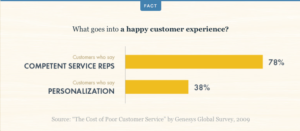
Customers who put their trust into a brand when reaching out to them on social media in the hope of getting their problem solved or question answered, and get… nothing in return.
The customer service teams are nowhere to be found, and it still amazes me every time I see it how brands can miss out on a huge opportunity of building relationships and trust with their audience on social media.
Are you one of them?
Why use social media as customer engagement tool?
Why should you even bother social engagement, we still have email and customer service phone lines?
That’s something some people still say (I know, it’s amazing). Before I start an argument about the benefits of social engagement’s leverage over the traditional customer service tools, let’s look at why you should use it.
The simple answer is that the world is evolving, and so should you. At least if you still want to keep in touch with your audience.
Also, the statistics speak quite clear when it comes to presenting what the audience actually thinks:
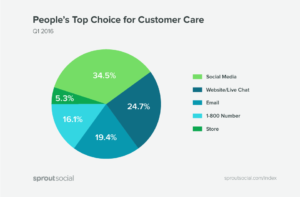
Not surprisingly (or surprisingly), social media is people’s top choice for customer care, with 34.5% having it as their favorite brand contact tool.
But if the people who reach out to you don’t get a response, or more correctly get a response quickly, shit is going to hit the fan.
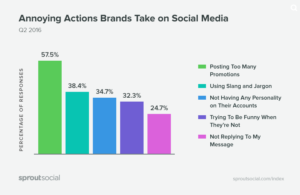
24.7% of people say that brands not replying to their messages is annoying.
And that’s only when brands not respond at all, which is really bad in itself.
Not to put any pressure on you, but people expect brands to respond to their message within 4 hours. The reality looks completely different though.
In fact, the average response time on social media by brands is 10 hours!
Think about the huge disappointment the customer must feel when their expectation in time is more than doubled.
Not good.
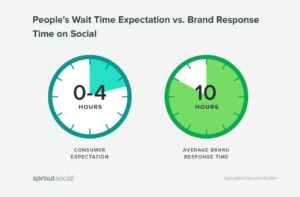
Now that we’ve looked at the tremendous benefits social media engagement has, and what happens when you don’t do operate it properly, let’s look at how you can use it properly to tailor a good experience for your customers.
How to improve engagement and provide a good experience
When some people who have worked with customer service for a long time hear the word social media engagement, they just freeze. However, just because it has a different name, doesn’t mean they are too different from each other. The principle of the more traditional ways of PR and social PR are very similar, and the keys to a good customer service experience still remain.
Social engagement is still customer service. Only that the conversation has moved from email, telephone, and website chat to social media.
One of the main benefits of using social media is that a huge part of your audience spends their time there – and you have the potential of reaching them. With the traditional ways, you can’t reach them all at once, nor reach them very well unless they write to you first.
1. Get the conversation going
In order for a conversation between two parts (brand and customer) to take place, someone needs to take initiative, and as a brand, doing so can be very beneficial and rewarding.
To build long-lasting, relationships, it’s not enough to just engage with your audience once, twice or even four times. In order to build a long-lasting relationship, you need to engage with your audience over a longer period of time and do it consistently.
Sounds reasonable, right?
The first step to getting a conversation going is to have an audience. If nobody knows about your presence, who will talk about your brand?
The obvious way would be to redirect the people who visit your website and then gets questions they need to be answered, to your social media pages. All you need to do is implement a few social buttons on a visible spot on your website.
You can even add a message next to the buttons to get your audience to contact you on social media with their questions instead.

Since it’s an obvious choice to go to the contact/customer service page on a website when wanting to reach out to a brand, adding your social buttons there is a good idea.
A tool you can use to do so is ShareThis. The tool lets you implement a variety of different-styled share buttons and lets you connect directly to 200+ social networks, including Facebook and Twitter.
The second obvious thing you should to do is share content that your audience finds appealing and interesting. Sharing content that your audience finds interesting helps people start talking, thus giving you an opportunity to continue the conversation with them.
2. Share valuable information
When people realize you are an expert within your area, they’ll come to you with any questions regarding that subject. Now, the initial conversations will probably be non-product related or related to your brand, however, by building a name for yourself in your industry, you’ll open up their eyes for your brand, and fairly quickly, you’ll gain results from it.
You can join chats in your industry, run live videos, share a “daily knowledge” post and a lot more. Information is valuable, and by providing value, you’ll get rewarded for it.
In the beginning, the only time you should promote your brand or products is when people ask about them. Long-term, you’ll have far more success by simply building your name in the industry. As a result of that, people will check out your brand on own initiatives, without you having to shove your ads down their throats.
3. Encourage, and share user-generated content
user-generated content is extremely powerful in terms of marketing, but also in terms of getting your audience more engaged in your brand.
Many brands have their own hashtag that they promote, and ask their audience to use.
Under Armour have even implemented their slogan “IWILL” in their Instagram bio to further increase its visibility and encourage their fans to use it.
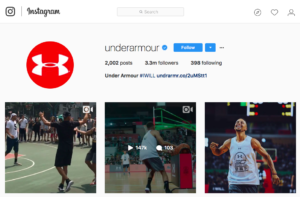 They seem to have succeeded in doing so also.
They seem to have succeeded in doing so also.
Their hashtag “IWILL” has generated 760K posts and counting. This means a ton of exposure for Under Armour, and clearly a very engaged audience.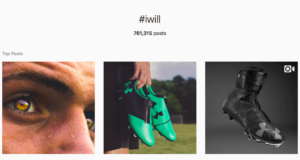
Instead of a hashtag, you can simply ask your audience to tag you (@), or, you could get them to do both.
However, most people want to have a reason to do so, and far from everyone will do it without gaining anything from it. That’s where giveaways and gifts come in handy.
Run giveaways where your audience has to post a photo using your hashtag to join the contest.
Or..
You could simply show your appreciation to the people sharing the content by reposting their content on your own page. This shows that you value them far better than just asking them to share a post and adding your hashtag. By reposting their content you acknowledge them and make them feel special, which is a very powerful thing in social media engagement.
4. Respond to messages (quickly!)
We’ve seen the statistics about the response time, and what can happen if you aren’t on your toes and respond quickly, so inevitable, this point will make it to the cut.
If you can, have a team that can answer messages 24/7. If this isn’t possible, adding a small pointer in your bio, letting your audience know when you are available can be very helpful.
Also, make sure that you have activated notifications so that you are instantly notified when someone writes to you and can respond quickly.
If you have created social media accounts, you have to be prepared to answer any messages you might receive. Otherwise, you’re sending out signals that you don’t care – which will harm your brand tremendously.
In fact, Americans tell 9 people about good experiences on average, and 16 people about poor experiences with a brand.
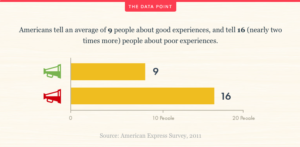
5. Respond well
It’s not only about responding as quickly as possible when it comes to social engagement. It’s more about giving them answers to their questions and giving them everything they need.
Unfortunately, many brands seem to fail in doing this. 94% of online retailers provide email customer service, yet 27% of emails are answered with faulty information.
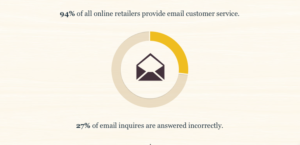
That’s not all…
Customer service agents fail to answer their question 50% of the time. That’s a serious number!
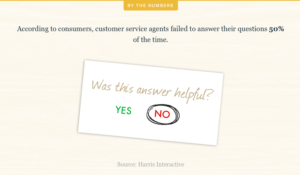
Make sure you put experienced and knowledgeable people in charge of your social customer service because by having inexperienced individuals in charge, you might damage your brand more than you’re actually building it.
When customers don’t get answers to their questions, it is just like sitting in a phone line trying to get in contact with someone at a company but all you’re doing is getting redirected round and round – sometimes for hours.
If this is the kind of customer service you are planning on providing, it might be better to not use social media at all.
Don’t worry though. Once you’ve got it all figured out, social engagement is extremely valuable for brands. You simply need to educate those in charge, and actually, it’s an easier task than it may sound.
- Think of the following:
- Speed is key
- Make sure you answer the questions people ask
- Ask them if they got their question responded
- Always ask if there’s anything else you can do for them
- Call them by name – 100% of the time, they have one!
- Thank them for their message, and if appropriate, start conversating with them to get to know them better
- Last but not least, study their social account before writing with them to get to know the person better.
A lot to think about, but most definitely worth to have in mind.
Conclusion
Social media engagement is a tough nut but it bears a lot of fruit once you just plant it in the soil and look after it every single day.
You need to water it and make sure you have plant nutrient.
Social media engagement works in the exact same way. To have any success with it, you need to be ready to respond quickly every day and every hour. The nutriment of the customer engagement is your responses. As discussed, 50% of brands fail to answer the question of their customer. If you choose the wrong nutrient, your customer relations will not grow, and in the worst case, the plant will die.
Set the right people to do the job and make sure that you are constantly checking for customer complaints and solve them quickly.


